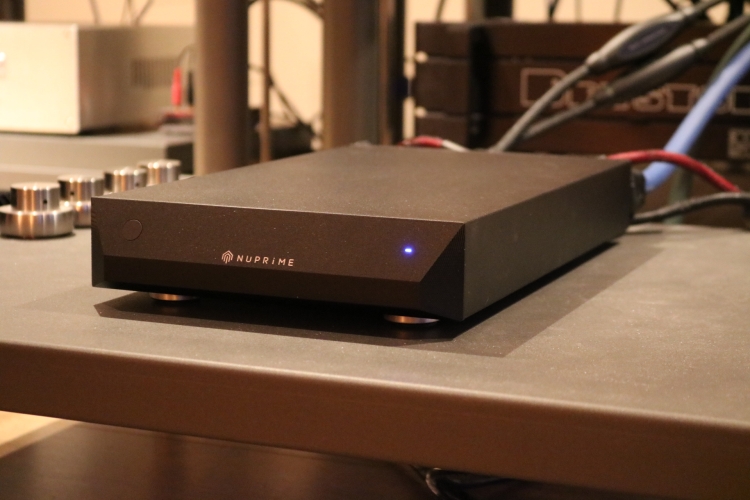
Incredible performance at an incredible price
Review sample provided by Dimex
Retail Price: 1595 euro
Let’s go crazy and start with the conclusion for once, as the following text on the NuPrime product page pretty much sums up how I feel about this amp:
“NuPrime’s sonic character stands well apart from – and indeed above – the soft, cushy sound we often associate with most tubed amplification and the dry, clinically edgy sound we often associate with solid-state and switching technology. Rarely does an amp achieve an ideal balance of richly textured timbres and harmonics, bottom-end authority, startling dynamics, exquisite low-level detail, and a fully revealed, fully dimensional sound stage against a backdrop of mile-deep silence.”
But do read on to learn more, and to find out exactly how the ST-10 performs with various speakers and how it compares to various other amps.


Unique Sonic Characteristics
NuPrime has unraveled those parameters with which they can tailor each product to have unique sonic characteristics. Opinions and personal taste will forever differ, and so there will always be those who want a smoother, creamier, warmer delivery, for example, to add some extra romance to vocals. While the ST-10 is a clean sounding amp, NuPrime also offers creamier sounding amps, should that be desired. The choice is with the customer, and this is quite unique.
By cleverly combining the various parameters precisely as required, NuPrime can pretty much offer custom solutions. For example, to quote from the amp-comparison white paper:
“We advise customers to make their selection based on sonic preference and usage scenario. If you watch a lot of movies and enjoy a wide variety of musical styles, you might prefer MCH-K38. If your thing is classical music in its entire vast and dramatic splendor, you will likely go for Ref 20 or ST-10. Conversely, if vocals are your passion, you will likely prefer the MCH-K38 or STA-9.”
This all lines up perfectly with the mantra that I keep using in these pages which is that audio equipment selection is relative, and very much dependent on system synergy and personal preference.

Technical Aspects
There are various manufacturers that issue amps based on Class D amplification. Usually, they employ modules such as ICEpower, Hypex, Pascal and then they may apply some tweaks. NuPrime is one of the very few companies left that still do original R&D on class D designs. They designed their own circuits and implement them as cost-effectively as they can while maintaining very high performance.
According to the manufacturer, NuPrime amps have no phase shift. Many amps use output filters that create phase shift. When the phase shifts, spatial information becomes inaccurate. Most amps present phase shifts of better than 45 degrees at 20 kHz, heading toward 90 degrees as frequency increases. NuPrime amps cancel these distortions owing to a unique closed-loop design producing ZERO phase shift across all frequencies. Another interesting aspect of the NuPrime implementation is that instead of the conventional saw-tooth configuration, the NuPrime circuit design uses a naturally occurring analog-modulating signal that adds neither noise nor jitter.
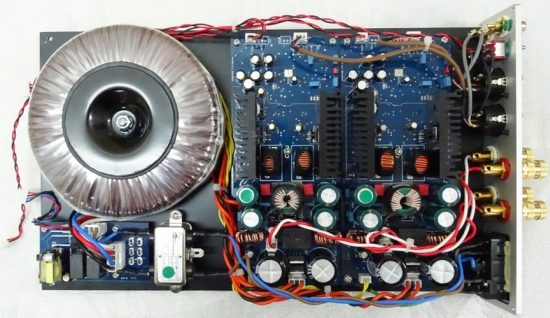
There is a lot more to write about Class D in general and the NuPrime implementation in specific but that’s already done in many places as well as on the NuPrime website, for example in their Learning section.
One important matter that I want to (again) stress is that class D is not necessarily Digital. Rather, class D describes a switched output stage working according to the PWM principle, which is very much analog in itself. Extra steps can be taken to enable a digital input but the amplification part is still analog.
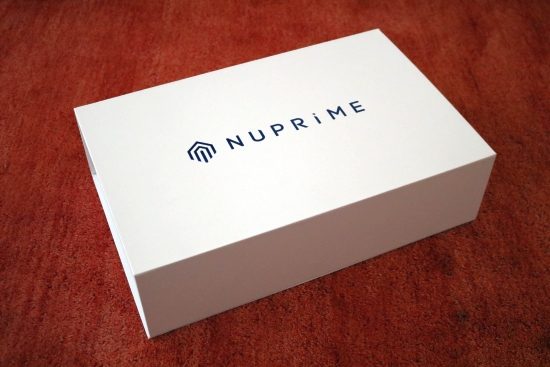
Above and below: very clean packaging with an infinitely re-usable magnetic lid
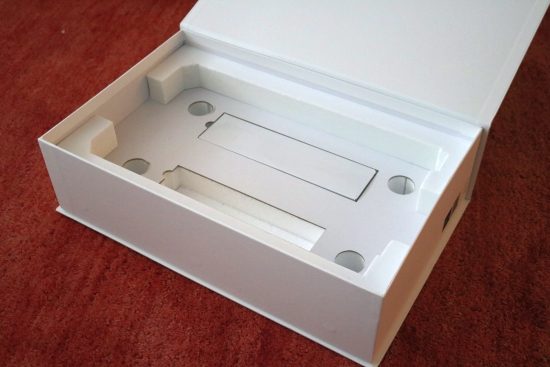
Wilson Sabrina
The NuPrime ST-10 is a tiny amp. If I did not know better then it would be easy to assume that it is underpowered for any Wilson. The truth could not be more different: the ST-10 really brings the Sabrinas to life! The transient crispness and dynamic impact are really startling, better even than with any of the other amps that were used during the Sabrina review. Bass is also incredible, not in a big and fat kind of way but because it is tuneful and articulate with just the right amount of pressure. Meanwhile, the NuPrime’s very natural tonality helps the Sabrinas sound timbrally more believable.
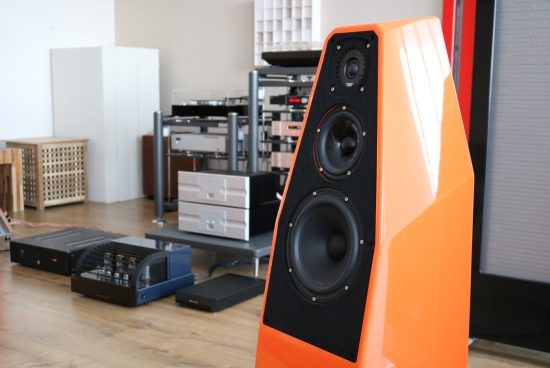
Timbrally the ST-10 is a mix between the Ayre VX-5 Twenty and the Bryston 3B cubed but with more accurate bass than the Bryston and more impressive dynamics than the Ayre. From memory, it does not have the fluid yet synthetic nature of any ICE power amp that I tried but it does sound a little like the Jeff Rowland 525 which uses a Pascal module, in terms of solidity and sonority. The 525 however never really came to life during my tests, which the ST-10 absolutely does, and with gusto! The NuPrime really presents music with a life-like, as well as live-like character: tonally pure, direct-coupled and very expressive. Treble performance is slightly rough though. Not at all harsh, just seemingly not as fluid and hi-res as I’d like it to be. Or could it be that the ST-10 presents treble just the way that it is on the recording, meaning that many other amps add more fluidity than they should? I’d be tempted to say that this is not very probable, but when listening to the ST-10 on the Apogee Centaurs or the Gustavsons, and playing a selection of old smooth jazz, it’s just great, with treble that is as fluid and airy as it needs to be.
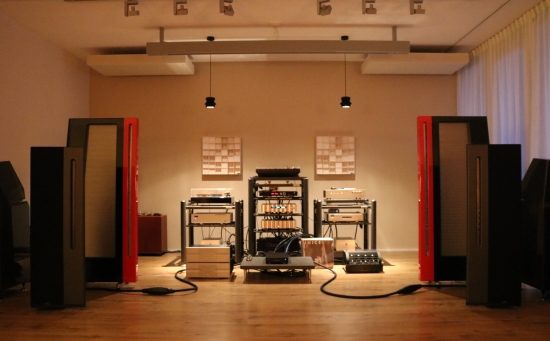
Apogee Centaur
For more than a decade, the Centaurs were used with Jeff Rowland model sixes by their owner and dear audio friend JW. The sixes are true high-end amplifiers that in their day cost around 15.000 euro. This is almost 20 years ago so go imagine what they would cost now. Ok, so the NuPrime ST-10 is not the equal of these Rowland monos, but as the Rowland sound has slowly evolved from very creamy to more neutral these days, the ST-10 actually comes closer than you’d think. Although the ST-10 does not have the Rowland-typical rose-tinted, extra smooth character, it does perform better than the sixes in some aspects.
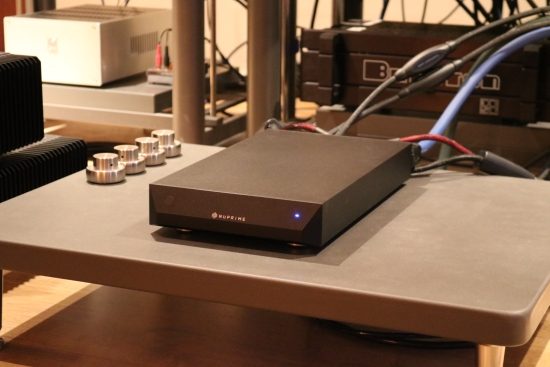
Connected with current edition Transparent Super XLR interlinks and Transparent Super speaker cables I listened to Joyce Cooling’s Cameo and then Chris Standring’s Blue Bolero, and it really sounded great! Maybe I did not hear the same amount of treble air, but the treble was definitely airy and most definitely not edgy or bright. The Centaurs really are not tolerant at all in that respect, so if there was any harshness added by the amp, the Centaurs would have let me hear this. Listening to more music I do hear that not all music is produced equally smoothly, but the NuPrime is always honest. Even when playing dry recordings and when the treble sounds square-ish, still all you do is take note of it and move on, because the sound is otherwise so engaging. As expected the bass was just perfect again, but not expected was the lifelike tonality and the liveliness and involvement in the midrange. This was a real toe-tapping performance. I was actually more involved emotionally using the NuPrime because of this, even if ultimately it is not every bit as refined and hi-res as the Ayre.
The ST-10’s very direct and highly revealing delivery may not be liked by everyone though, but that’s a matter of personal preference. And as mentioned, should a warmer delivery be required then NuPrime also has several smoother sounding amps in their portfolio.
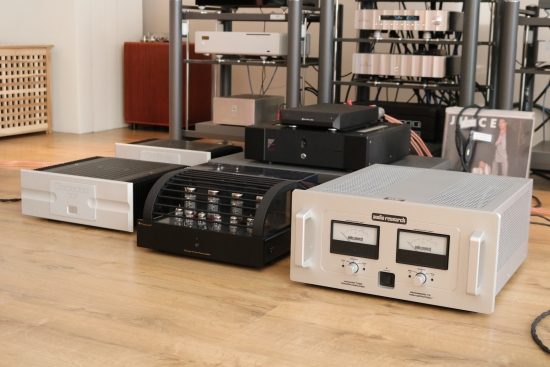
Really the only aspect of the ST-10 which makes it less than ideal for me is its treble behavior. While absolutely never harsh, it comes across as lower in resolution and lacking the air that my Jeff Rowland model 6 amps had, and which the Rowland 625 s2 and Ayre VX-5 Twenty also have. But these are just boxes that I want ticked, being the perfectionist audiophile that I am. For the most part, this is academic, as the musical message is certainly not hampered by such aspects.
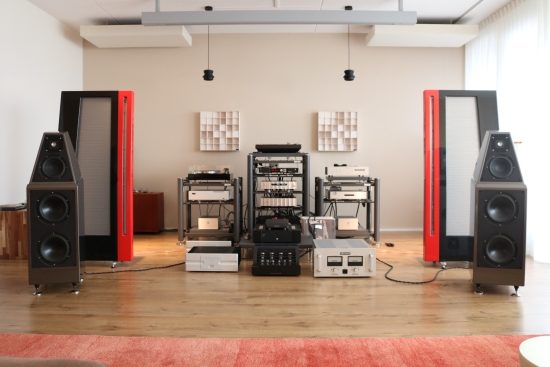
Wilson Watt/Puppy 8
Switching from the Sabrina to the Watt/Puppy 8, the ST-10 is still completely in control but without sounding overly controlled. Once again the midbass and lower midrange are the areas that stun me most. Also with the Watt/Puppies the amp seems to have plenty of reserves and is still happy to play as loudly as I ask it to while retaining posture at all times. It simply does not compress nor does it become shouty. Quite an achievement for a 1500 euro amp!
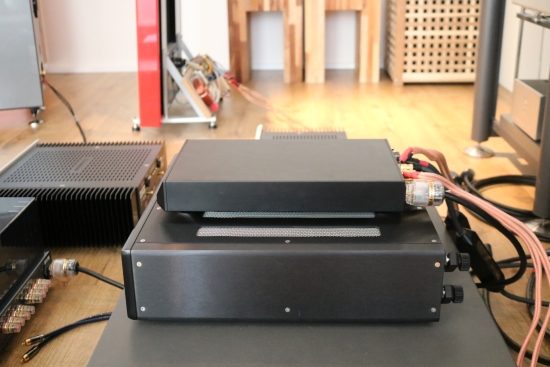
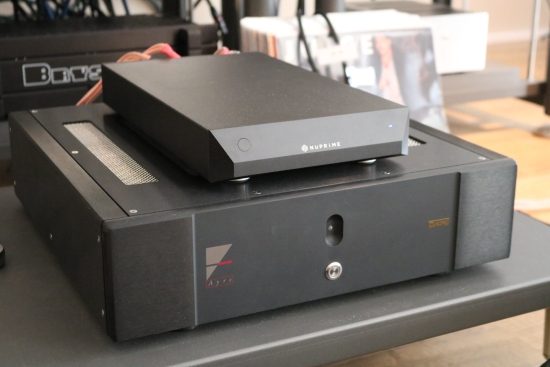
Apogee Duetta Signature
Since we’re in fun mode anyway, let’s see what the ST-10 can do with the recently re-re-furbished Apogee Duettas. After listening to them with the Ayre VX-5 Twenty, the NuPrime ST-10 comes in. Disrespectfully placed right on top of the Ayre and connected with the same interlinks, power cable and speaker cables, the ST-10 was just switched on from cold. Right away the most striking feature again is its sonorous sound. It’s not a smooth and “BIG” sound in the Bryston kind of way, nor creamy classic Rowland kind of way, but something I can only describe as a clearly defined and upbeat lively ballsiness.
Coming from the Ayre it is also evident that the NuPrime does sound less finely resolved than the Rowlands and the Ayre, but with the Apogees, it definitely does not sound dark just less fluid. Also with the Duettas, it’s not rough or harsh and certainly not processed or synthetic, and while treble seems to be lower res, the bass is actually very highly textured and precise. This again raises the question of whether the NuPrime is actually lower res in the treble or most class A/B amps simply add fluidity that isn’t in the recording? If you ask me this is not a question that must be answered. It’s simply a matter of preference. I guess that if you want very accurate bass, you also get very accurate treble, for better or for worse.
The Apogees are certainly under control, and with power to spare. Also evident is that this class D amp absolutely has no issues passing along the music’s lyrical qualities. The amp gets right to the heart of the performance. It doesn’t distract itself with fine details too much but definitely delivers the musical message with gusto.
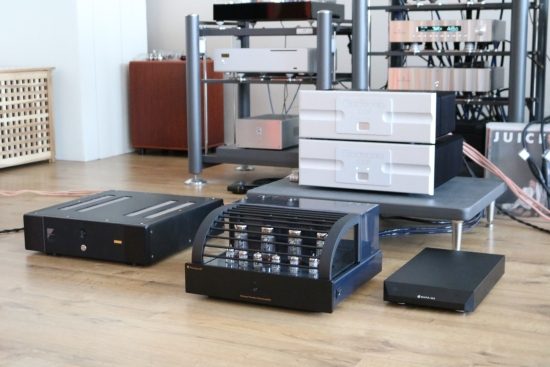
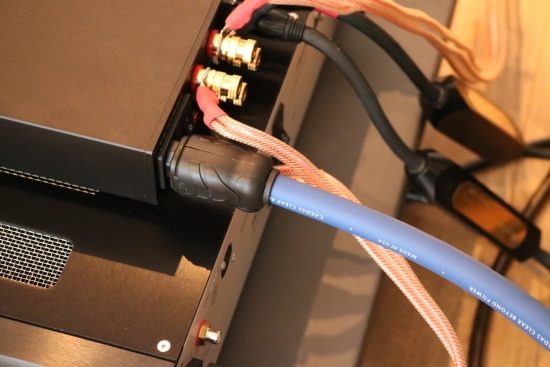
Changing the Belden + IeGO power cable for a Cardas Clear Beyond definitely brings some welcome changes. Although now slightly less controlled in an absolute sense, the overall sound is gentler and more fluid and yet still very sonorous. Changing the Cardas for a Furutech FP-TCS31 adds more “gravy” so to say, to create a creamier sound, which works very well with slower music like soul. With rock music, however, I start to long for a little more bite, and the more direct-coupled, timbrally more acoustical portrayal with the Cardas and even more so the Belden. The amp certainly does not require high-end cables to sound its best, but it is interesting to know that it can be tweaked, should this be desired.
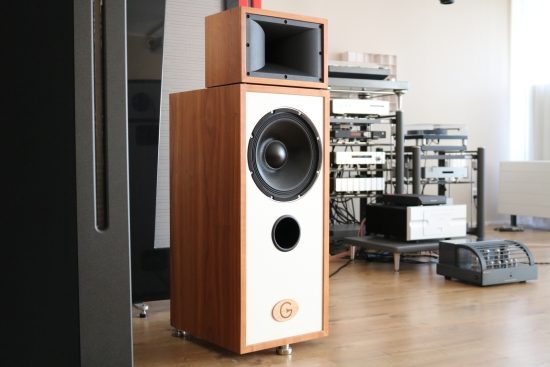
Gustavson LS-One
With the very efficient Gustavson speakers, the NuPrime provides a superbly intimate midrange and quite unsuspected, smooth, fluid and airy treble. This was unsuspected because the NuPrime’s treble comes across as being a little rough with the Apogees and the Wilsons. The ST-10’s bass is faster and more articulate than that of the Brystons, and acoustically more convincing to my ears. That said I can imagine some listeners preferring a warmer sound with these speakers. Even though each of my friends agrees with me that the ST-10 has remarkably natural timbre and impulse behavior to challenge the best tube amps we heard, some of them still prefer the warmer, richer sound of tubes, or the Brystons, especially when listening to vocal music. JW even happily admits that even though he sees the benefits, he has been listening to a fair amount of smear for so long that he finds it difficult to get used to such a clean sound. For upbeat music with lots of rhythm and percussion, we all agree that the ST-10 is most fascinating and involving.
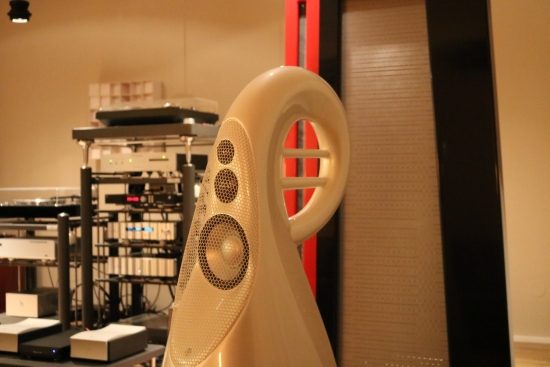
Vivid Audio Giya G3 s2
Now for the most unlikely combination of all: a 1500 euro NuPrime ST-10 with 35.000 euro Vivid Giya G3’s. Probably nobody would even think of even trying this but I am happy to confirm that the humble ST-10 drives them splendidly! The Vivids were delivered for review along with Mola-Mola Kaluga power amps and those amps really are worthy of their reputation. The main difference between these two very differently priced amps is the same as I have described further above and concerns ultimate resolution, the NuPrime just not reaching the insane levels that the Mola-Molas do. Further, there is a difference in timbre, bass fullness, and ultimate transparency.
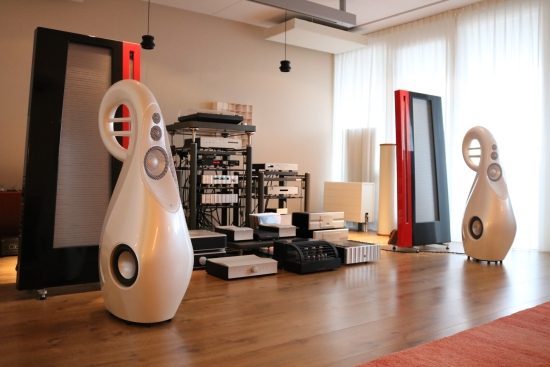
The Vivids really are very revealing speakers, perhaps even more so than the Wilsons, and it is with these speakers that I can most clearly hear that the NuPrime has some added character that the Mola-Molas do not. The NuPrime has a fuller tonality throughout the midbass and lower midrange which I actually like and prefer with some speakers. One might call it a coloration, another might call it more natural. In any event, whereas many other class D amps sound quite thin, this extra body also adds to the ST-10’s more natural timbre. The Mola-Molas, by comparison, are ruler-flat and much more anonymous, which makes them ultimately more universally applicable. Now whether or not this is a pre or a con is a personal matter. While I appreciate both approaches, as well as the sound of tubes, done well, many of my friends are more biased toward one or the other. I would say this is mostly a matter of taste and much less so of quality. What is a matter of quality, however, are resolution and transparency. The Mola-Molas are simply more finely resolving and transparent. This is most evident in the treble, which with the Mola-Molas (as well as with Jeff Rowland and Ayre) is more fluid and airy, but without adding any smear.
So, whilst better performance can be obtained, you’d have to spend at least 10k to achieve this. It’s always the last few percent that cost the most to achieve! Nonetheless, the NuPrime just performs admirably even in the context of super high-end speakers and that really is quite remarkable.
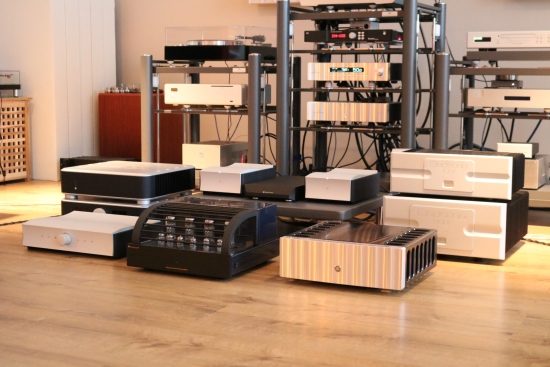
Above: NuPrime amidst some of the finest power amps available. In the back row: Analog Domain M75P, Mola-Mola Kaluga, Bryston 3B Cubed and 14B Cubed. In the front row: Mola-Mola Makua (which is a preamp), PrimaLuna DiaLogue Premium and Jeff Rowland 625 s2.
Conclusion
I’ve heard many class D amps, but have liked very few. While bass control and neutrality are often a piece of cake for these amps, they are usually let down by thinness, harmonic deficiencies, and an unnatural timbre. The NuPrime ST-10 is the first-class D design that sounds timbrally wholly convincing to me. A piano really sounds like a piano, not like a synthesizer and vocals are just as direct-coupled as they are in real life. Add in bass heft and thundering dynamics like I have not yet heard from other class D designs. Only the Mola-Mola Kaluga’s ultimately provide more refinement and transparency but these are placed at the complete opposite price spectrum.
On balance, there is just no denying that at any price the ST-10 is an exceptional amp. Heck, at a mere 1595 euro, it is simply sublime! NuPrime is not exaggerating when they say that they have implemented both solid-state and tube elements into the sound. Just don’t expect the ST-10 to sound like a generic romantic and mushy tube amp but rather more like a lightning-fast SET with ultra-clean, clear midrange. Like a good SET, the ST-10 does not add warmth or romantic colorations but produces pure, honest and lively music, complete with the highly lyrical qualities that come along with this type of amp.
Finally, NuPrime believes that the customer should be able to choose from a palette of amps with different characteristics, to match personal taste. So, should all this talk about purity and powerful dynamics put you off and you’d prefer a more creamy-rich sounding amp, then NuPrime has alternative solutions for that such as the MCH-K38 or STA-9. In any event, the ST-10 is my new class D reference in its price category, and way above it.

External Links
Manufacturer’s website: NuPrime
Distributor for the BeNeLux: Dimex
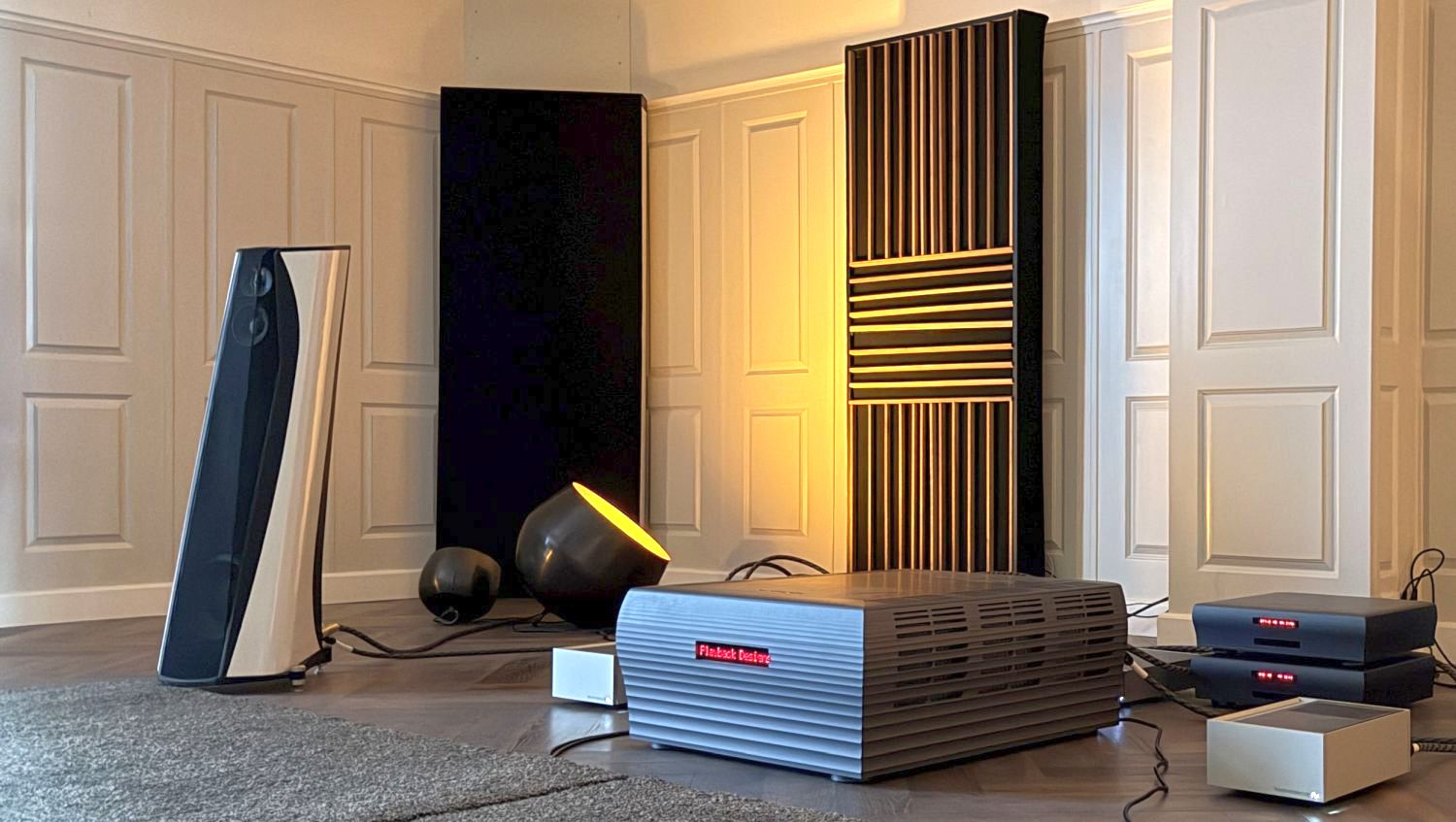
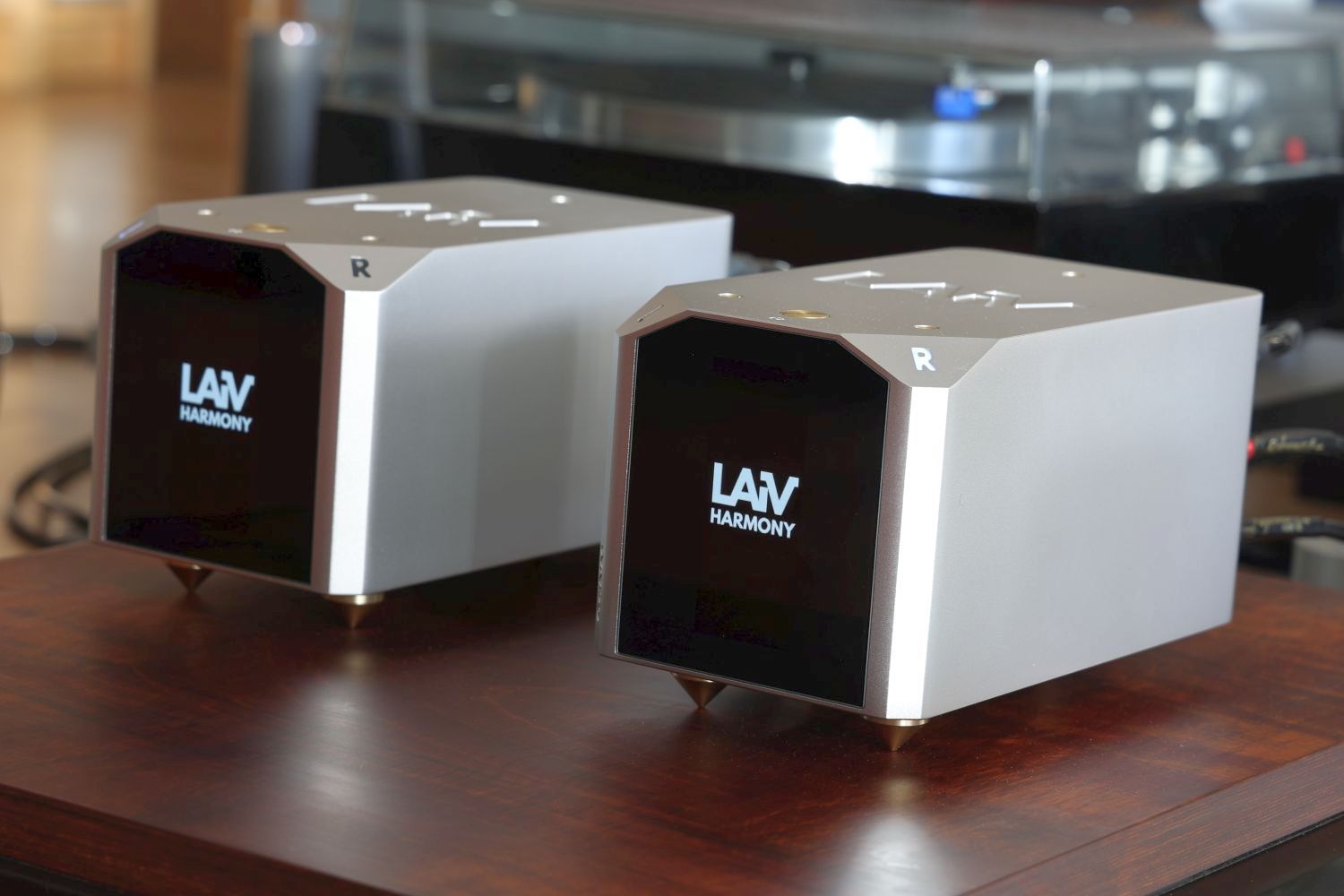
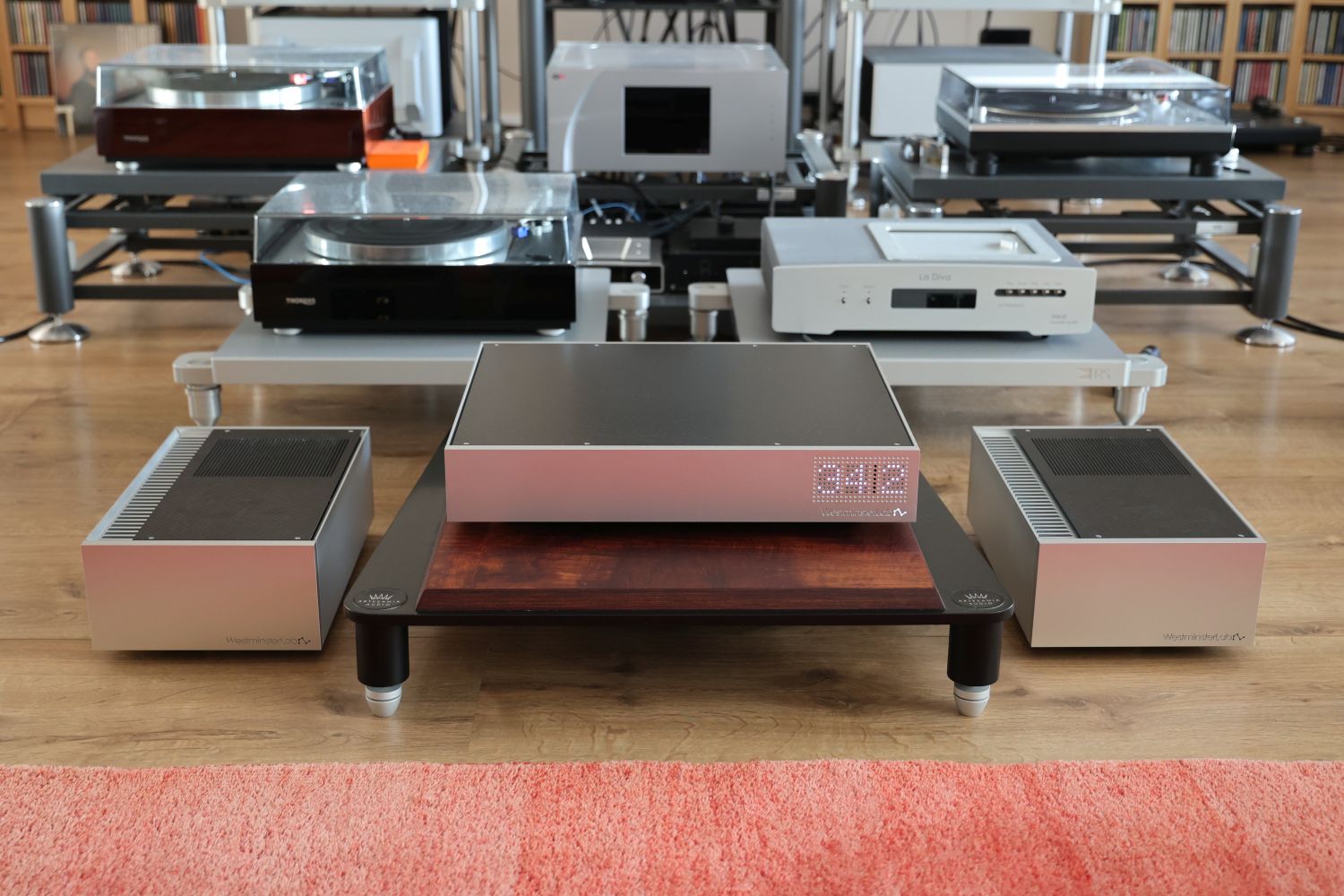
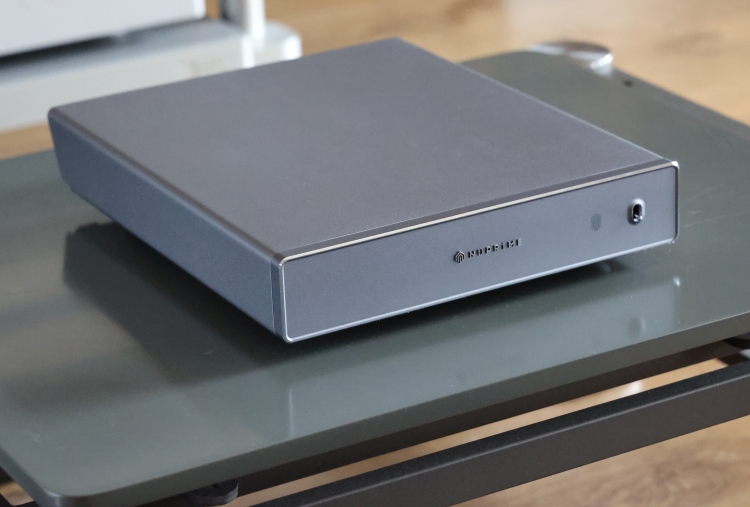
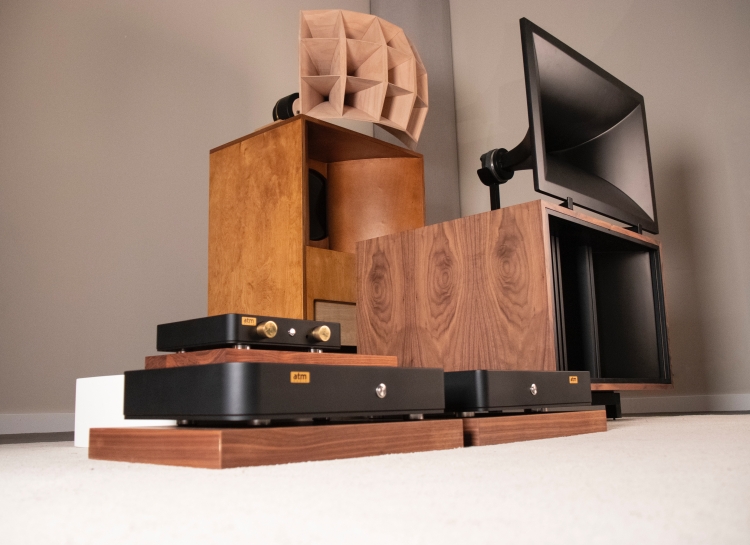
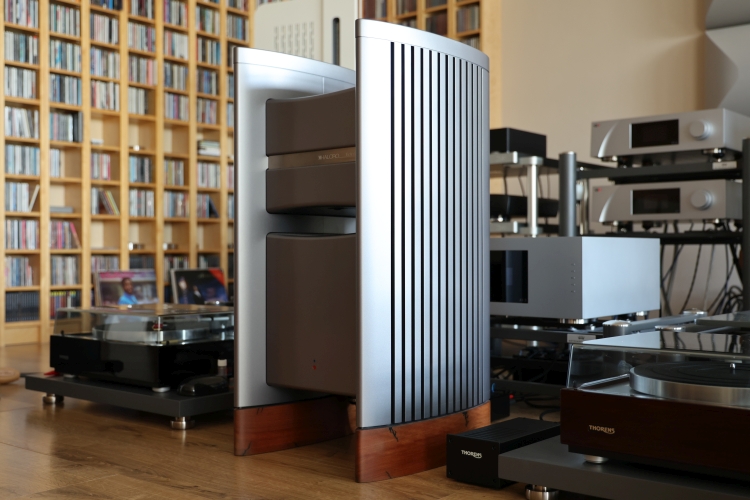
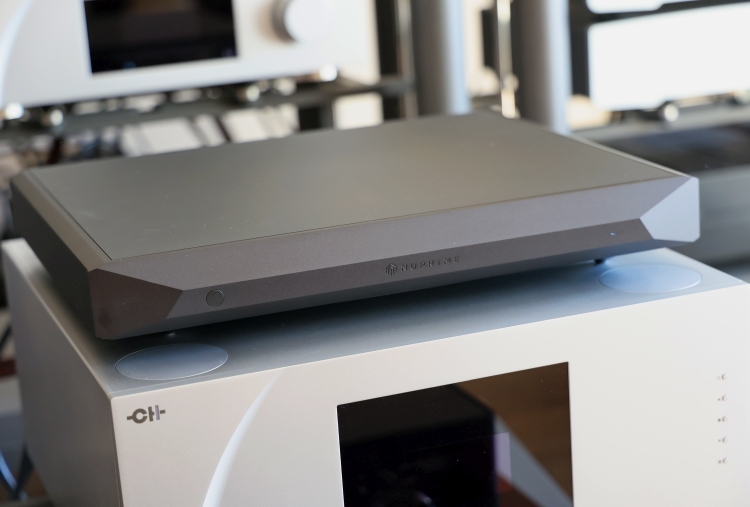
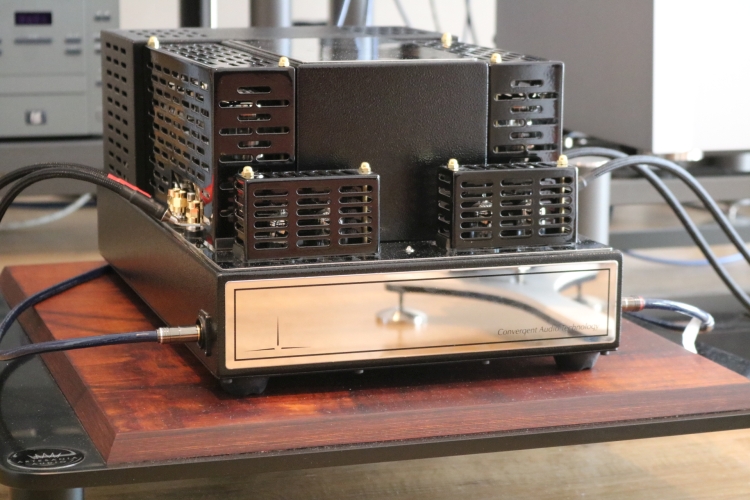
Hi
Congratulations for your reviews .. They are the best ones you can find …I continue to trust you !!!
Regards
Dear Christiaan, always read you is a preasure.
My dude was how will ST10 same power at 4 or 8ohms can to drive my Duettas.
Did you notice something about that?
Best regards
Indeed I wondered the same thing. It looks unconventional, but many Tube Amps are the same and yet they can also be very powerful. In any event the Duettas were controlled extremely well and sounded very dynamic. Much more so than with the amps that I tried that do double from 8 ohms into 4 ohms. So whatever the technical explanation, these numbers are not telling the whole story.
I asked the manufacturer about this and he responded as follows: This indicates that the amp is more powerful than the power supply can provide. Keep in mind that these are RMS spec, not peak power. Some vendors would quote spec at 4 ohms, for example, 150W at 4 ohm. And their 8 ohms spec will be 75W, because the power of the amp maxed out at this spec. But for ST-10, the power max out at 150W at 8 ohm (not 75W). So at 4 ohm, it is also 150W (instead of 300W) because the power supply can not deliver more power. So technically if ST-10 is placed in a bigger box with a larger power supply, the spec will increase.
“Hi Christian,
I am just about to upgrade my old Linn LK85 amps and Linn Ninka speakers . The system is tri amped and I’m using a Densen B250 pre amp.
I’m upgrading to Martin Logan’s ESL15A’s and retaining the Densen B250 but I am in a quandary ad regards to a power amp . The Nuprime ST10 M review looks very good but before I read it I was recommended PS Audio stellar amps which are a similar price. I was wondering if you had any experience of these amps and how they compare to the Nuprime. I can’t get a demo of the Nuprime as they are currently not available in the Uk and I would have to order from Europe so I don’t want to make a mistake .
I would very much appreciate your comments.
Best regards,
Barry
Good question, Barry. Alas, I have not heard the PS Stellars. But given that they contain ICEpower modules, I think I have a fair idea of what they might sound like. If you read my reviews of thye various Jeff Rowland Class D amplifiers you’ll get more than a hint of what to expect. In short: ICE in general tends to be on the lean and fluid side, the NuPrime ST-10 is darker and more robust and Pascal falls inbetween, being too controlled for my taste but in timbre closer to the ST10 than to ICE. Another way of looking at this to decide which direction you want to take the ESL15A’s. Coming from the Linn setup, I think you’re going to be pleasantly surprised by the extra bass. The ST-10 will further enhance that. However, with these speakers, it might be better to choose an amp that is a little leaner in the bass but more open and detailed such as the AMG-STA, or even better, a pair of them. And if you like resolution and transparency, you can’t beat the AMG’s until you spend many multiples.
Hi Christiaan,
Your comments were very helpful and I will be going down the AMG route. The dealership that loaned me a pair of ESL13A to get a flavour of what Logan’s are like (15A not available for demo) kindly gave me an Krell K300i to drive them. Before contacting you I was worried that by supplying me with an £9000 amp would leave me disappointed when choosing a more budget conscience option.
Your review of the AMG plus your comments to my original question have left me firmly intent on getting 2 of the AMG’s
Once again thank you for your excellent reviews and helping me to make the right decision.
Best regards
Barry
Hi Barry, great, do let me know how you get on!
Thank you Chistiaan for repply.
Interesting, one year ago I was to test it, then tested a pair of MURANO P500plusII (same ASP250 ice power and Lundhal transformer than JR201s) with PFC module (like JR too) and I it was cool. A few mounth ago tested JR Model 2 and really was a great step forward.
Do you really think ST10 will improve perfomance from Model2?
ST10 and Model 2 are very different amps with very different characters and strong areas and you can’t overall call one better or the other. It depends on what you want. The Rowland Model 2 has the airiest treble and most subtle, fluid and refined sound that I heard from any Class A/B transistor amp. So far only the Ayre VX5-Twenty can match it in some of those areas and exceed it in others, but it also sounds a little cool. The same thing could be said of many ICE power designs, although they can certainly be fluid. The NuPrime ST10 has a beefier, more earthy sound than typical ICE power amps, or any Class D amps I heard so far and that includes the Rowland 201, 125 and 525 models. Compared to the Model 2 the NuPrime cannot match its refinement but has a bolder and more sonorous presentation with much better grip on the bass and a much more dynamic presentation.
Bonjour ,j adore vos testes ils sont tres justes et precis, je viens d acquerir un Nuprime iDA 8 ( classe A et D ) franchement un super ampli a moins de 990 e ,tres doux,chaud, pas projeté ,son plein, j aimerais le voir tester par vous ,merci .Cordialement Franck
Hi Franc, translated you wrote: “Hello, I love your tests they are very correct and accurate, I just acquired a Nuprime iDA 8 (class A and D). Frankly a super amp at less than 990 euro, very soft, warm, not forward, full, I would like to see it tested by you, thanks”.
Soon I will be doing more reviews of NuPrime products but I can’t promise that the iDA8 will be included. Maybe…
Thanks a lot, Christiaan, for this wonderful review!
I have a JR Concerto INT and i really love it. I’ve read your post about the Concerto PRE and i’m curious about connect the Concerto’s preamp to a Nuprime ST10. It’s going to sound better than my actual Concerto power amp section? (based on 201’s). Another idea is connect a JR 535. What do you think about it? As musician i’m looking for the most realistic sound possible.
I forgot to mention, the rest of my system is Avalon Opus Ceramique; Kimber Select 3035 & 1130 and a Directstream Jr. DAC.
Thanks again!
Hi Jose, well, “realistic” can mean one thing for this person and another thing to someone else. There are various aspects of reproduced sound that can make the music appear further from or closer to the real thing. For me, timbre/tonality is perhaps most important. This also happens to be the aspect that the ST-10 is much better in than any other class D amp I heard, all Rowlands included and especially the ICE power-based units. Heck, it sounds more “live” and involving even than many high-end Class A/B amps. However, those ICE power units tend to sound more airy and refined than the ST-10. The 525 (Pascal) sounded better in the bass than the 201’s but not as refined or involving as I’d like and not as good overall as the ST-10. The Concerto as a pre is very good and certainly not in need of upgrading unless you wanted a different sound. The Avalons are very highly resolving, the 201’s less so and the ST-10 is not really better in that respect. This might be something you’d want to improve on although I find that resolution itself has little to do with emotional involvement. Also, it seems that your system has been tailored to get the Rowland to sound more dynamic/lively/timbrally full meaning that you might need to change cables more when using the ST-10 because it is quite different. So, it would be a little bit of a gamble but certainly worth trying.
Thanks a lot for your answer! Really appreciatte it!
I’m looking for the best timbre accuracy and sense “to be in” possible (i really like bigs soundstages). I use to listen to small baroque ensambles and jazz (70%) and orchestral (30%). My dedicated room is only 11 m2 and i like to listen to the music more in a “near field” way.
I like my Concerto sounds, specially the 3D imaging. Sometimes i use the DS as preamp, and that 3D “magic” is gone, even the bass is tigher and fuller with the DS, i prefer by far the Rowland sound. I solved that partcially adding a REL subwoofer in my system. For that reason i’m considering feed my Avalon with something different but mantiening the Concerto as PRE.
The thing is i’m happy with my sound but, you know, we are always looking for something (perhaps sometimes) a little bit better.
Could be the 535 a good option instead the high price? And in case i choose the ST 10, could the Transparent Ultra XLR a good cable for connect it to my Concerto? Any other option?
Thanks again for your help!
Jose Luis from Spain.
I’ve not heard the 535 but I did review the 525 (see review) and respected it but did not love it. It is beefier than the 201’s but I find it rather technical and restrained sounding and less free-flowing and fluid than the 201’s, which I feel are a little synthetic sounding.
Personally, I feel that the ST-10 sounds much more like live music than any other Class D amp and by a large margin. I have a feeling that you might feel the same but you should not take only my word for it. Why not just get one on loan and decide for yourself? If you feel that it is not the improvement that you hoped it would be then I fear that you may need to invest considerably more money.
Or, if you find that you prefer a smoother and creamier sound (but much less “live”) then you could go the Rowland route and try some classic models, for example, the Model 2, Model 112 or Model 10. Transparent Ultra XLR will work great, Cardas Clear would probably be a good upgrade but best first see how the Transparent combines. For more info on Class D and Rowland, see this article.
Thanks again!
So finally I’ve bought a st10. Do I need any spades or banana to connect my KS3035 to the power amp? (I haven’t got since my Concerto has Cardas connector type which accepts no spades or bananas). Is possible to connect them directly as I do with the Concerto?
Last question, I’ve read your Cardas Clear review and you wrote you prefer Transparent Ultra between pre and power amp instead of Cardas, that’s the reason I’m looking for an ultra XLR and I’ve found a pair for good price. So in this context the Cardas is going to work better or do you still prefer the Ultras?
Million thanks again!
Congrats!
The Cardas connectors on modern Rowland equipment do take spades but indeed no bananas. The ST-10 takes both. Because the rear panel is a little cramped, bananas will make more sense but I normally use it with spade connectors. As long as you’re careful not to cause a short and work around the power XLR connector and power connector inputs (allow the spades to point in any direction that they will fit) then you should be fine. In my experience, spades make for a better connection than bananas.
With the NuPrime I like Cardas Hexlink Golden 5C as well as Clear and recently I also use QudioQuest Water with very good results. But this is situation-dependent and you should not extrapolate all my results directly to your situation. In the past cases where I use Rowland pre and power amps I used to always preferred Transparent Reference XLR for its smooth and free-flowing delivery but toward the moment that I changed amp brands, I came to prefer the more powerful and sonorous sounding Hexlink Golden 5C or the more open and airy sounding Cardas Clear cables, as I moved toward a more neutral and more dynamic delivery.
In your case I’d advise to first listen using the cables that you have. The Transparent Ultra will give the most fluid sound but at the expense of some of the ST-10’s texture and tonally full body. Cardas Clear will provide most of the Transparent Ultra’s upsides and paradoxically provides a more transparent delivery. Hexlink is only recommended if you want maximum tonal fullness and sonority (more of the ST-10 character) and big bass at the cost of transparency, refinement and air.
Update: Finally got this wonderful tiny box. It´s incredible the way its drives my Avalon! Timbre accuracy is extraordinary as Christiian described, and bass control is just amazing. After spend many thousand euros in my system finally found the sound i wanted. Thank you SO much Christiian for your help.
Kind regards from Spain.
That’s great to hear José, thanks for the update!
Hi Christiaan,
I own Nuprime bridged STA-9 amps.
Do you think ST-10 could be an improvement over the STA-9 (more musical) ?
Could the St-10 be well suited for 4 ohms speakers like big and hungry Dynaudios ?
Regards
Hi Olivier, I’ve not heard the STA-9’s so can’t comment on how they’d compare with the ST-10. On the matter of power, though, I can put your mind at ease because the ST-10 drove each and every speaker that I tried with it with complete authority. Among others, that includes Apogee Duetta, Wilson WP8, Martin Logan ESL15A, and Vivid Giya G3 SII. Don’t be fooled by the seemingly modest increase from 8 ohms to 4 ohms: 4-ohm speakers really are no problem for this amp at all.
Hi Christiaan,
Just tried a nuprime st10 in my set-up. Naim dac V1, Naim ovator s400, Naim nap 100 and 250/2.
I am amazed: a subtle, gentle, powerful amp with tube like midband. There is no way back i’m afraid
Thanks for your review,
Same here, 3 months with my ST-10 and amazed everyday. I’m wondering myself how good have to be the Nuprime Evolution One monoblocks!
There is a new enhanced ST-10 now called ST10M
https://nuprimeaudio.com/product/st-10m/?v=fa868488740a
And it looks like they have addressed the weak points of ST-10!
Thanks, I am aware. But rather than review this upgraded mono’d version, I was asked to review the new reference models.
Hi Christiaan, arent the Evo’s 1 that you already evaluated the last ref model?
Indeed they are.
Hi Christiann, I was just reading this review and find it somewhat amazing in light of the fact one can purchase this amp at $900 or so here in the States. I own the Centaur Majors and wonder if you think the same synergy between this amp and the Centaurs would hold equally for the Majors.
Gary
Hi Gary, I’ve no doubt that the ST-10 would also work very well with the Centaur Majors, there’s enough power and the amp’s natural timbre would also be beneficial here. However, although I’ve only ever heard one pair of majors which might have been tampered with and so might have deviated, what I noticed was that they were considerably darker and drier than the midsize Centaurs. Coupled with the ST-10’s inherent dryness that might become altogether too much. At its humble cost, though, I’d say give it a shot and do let me know how it goes! PS: I’m still holding out for an original, non-modified pair of Majors. They are SERIOUSLY rare.
Thanks, Christiaan. My speaker technician tells me I need to replace the ribbons on my Majors (they’re ~20 years old) so that needs to be done before anything.
Also, to your point about the dryness. This is something I would like to avoid, so now I’m hesitant about the ST-10. I think the Majors need to mate with a more liquid sounding amplifier. (I’m going to immediately contradict myself by stating I use them with Krell FPB 250 monoblocs.)
That said, the NuPrime amps here are so cheap on the used market it might be worth the risk.
Gary
P.S. The price of the Majors here in the States has been all over the lot. I’ve seen some sales under $1,000 which in my opinion is way too low for the quality of the sound.
By the way, when you say “non-modified”, what do you mean?
Hi Gary, By un-modified I mean in original state. The Majors that I heard in my room were modified with a different back plate and new speaker connectors and although I was told that they had original ribbons, I can’t be sure that that was actually the case. Age is no indication for a need to change the ribbons, especially not for MRTW’s. I would only advise to change them if they are causing issues. Even at 1600 or so in the Netherlands, I think the ST-10 is a steal. However, it is indeed a dry sounding amp and I would not call it very liquid. But neither are Krells, indeed:-) I’ve seen a pair twice (when I did not need/want them) once for 800 and once for 1200 euros. Duetta Signatures usually go for less than 1600 which is also less then one would expect. Like these full range Apogees, the Centaur Majors are quite large and I guess that big specialist speakers like these are just not as popular as more room-friendly formats.
Ribbons – thanks for the advice.
My speaker technician took apart my Majors a couple years ago and found significant issues caused by, as I recall, overheating. He told me I may have overdriven the speakers with my Krell amps, that when he took apart the Centaur Majors it appeared they had been overdriven to the point where some of the parts had deformed from the heat (as he put it, it was as though there was a fire in the speakers, with only slight exaggeration).
Graz out of Australia (Apogee ribbon manufacturer) followed up by saying in an email: “Heat deformation in the woofer can come from dc offset boiling the voice coil. As amps like the Krell get old some of the original specs fail, worth getting the amp looked at. With the ribbons, generally they have a useful life of about 8 years, after which they tend to lose their potential a bit, then eventually fail.”
What’s a bit disconcerting in all this, Christiaan, is Krell warns about DC. As someone wrote on a audiophile site: “It seems that tube Preamps create DC and DC can damage my Krell amp, and possibly my speakers UNLESS I open the amp up and do something to the “jumpers on the digital board” . This puts some protection into the signal path. The Bad thing is, I’m told, – it also colors or degrades the audible signal coming thru the speakers.”
At the same time, I myself was told by a preamp manufacturer (whose name shall remain anonymous) not to worry about this it. But maybe he was absolutely WRONG and this explains what happened to my Majors.
Then, to wind this all up, my speaker technician wrote,
Gary,
Listen to Graz.
Sell the Krells as they’re just too much for a small 2-way, 10” system (in a huge cabinet), unless you’re planning to buy a full-ribbon masterpiece from Graz. (Wouldn’t that be nice:-) You would then have the amps rebuilt by Krell.
Hi Gary, it’s tough, isn’t it? So many people, so many opinions. Let me add my share:-) Naturally I also spoke with Graz about this and other matters as well as with my local Apogee restorer. Graz also told me that he feels that the MRTW ribbons lose immediacy and sparkle after about 8 years and while I can see his point and in an absolute sense this is indeed true when comparing original and new Graz ribbons, there is also something to say for the sound of the originals. I personally find they still sound plenty expressive even after 40 years and I would advise to only change them if A – they have become faulty, B – you would like the sound to become more crispy.
I am not a technician but I’ve learned a lot along the way. Here’s what I know. DC is something to look out for. While very low amounts generally can be dissipated without harm, larger amounts can indeed damage voice coils and ribbons. Any direct-coupled audio component can output DC if miscalibrated and that includes tube- as well as transistor designs. Some preamps (usually tube) have coupling capacitors and so cannot output DC, other preamps have a DC servo circuit that measures the DC and regulates the output. If the amp (pre or power) has a transformer output then no DC can pass. When you use old equipment it is wise to have them checked for DC on their output.
As for the Krells being too much, well, they CAN be too much. DC is always on the output even when not playing any music so that is something to make sure is within spec. Other than that, the regular current as part of music playback is only so much as you allow it to be with your volume control meaning that you won’t fry them unless you choose to.
“As for the Krells being too much, well, they CAN be too much.” Very true, as I have learned to my chagrin. What’s a bit confounding to me, Christiaan, is NOWHERE has anyone said/written “Be careful with Krell amps with the Majors, as they can harm the speaker if driven too hard”, at least that I’m aware of.
All this said, a friend reminded me Jason Bloom advised amps of ~100 watts with the Majors. I’ll only comment why design a speaker that’s quite inefficient / is a nominal 6 ohm speaker with drops down to 4 ohms yet designed for use with a smaller 100 watt amp? Isn’t this a combination that’s just asking for a result like I unfortunately experienced, i.e., for customers who like to rock ‘n roll every once in a while??
You raise a good point but I don’t think that the speakers are by definition unsuitable for amps more powerful than 100 watts. It’s more that those 100 watts are advised given the speaker’s inefficiency. I also guess it’s a matter of perspective but might it be that you may have played into clipping levels for a sustained period (with flattened peaks which resemble DC), or the amp did indeed output too much DC? In any event, I certainly did not hold back with the smaller Centaurs but they’ve not failed me yet, not even when driven with amplifiers that are capable of a lot more than 100 watts. That said, while they go plenty loud I would not regard the Centaurs or Centaur Majors, or even any Apogee speaker to be particularly fitting for properly rocking out. Wilsons do that much better but obviously with a loss in coherence and transparency. Ideally, I would like to use several listening rooms with different audio setups for different purposes but somehow I have a feeling that that would not be ideal either… but one can dream:-)
Hi Christiaan,
Thank You for the wonderful review of the Nuprime st 10 power amplifier.
My question revolves around the use of balanced cables. It looks like you are using balanced cables in your review. Did you as try single ended cables as well, and if you did , how would compare the two types of connection.
Regards
Paul S
Australia
Hi Paul, I still used the ST-10 on a regular basis and tried both XLR and cinch connections and although I have not A-B’d them using same-brand interlinks, they both independently produce excellent results. If any differences are heard then this can tie in with other factors such as differences in the cable construction or the output stage of the source component. Generally, I find that balanced cables lead to a larger soundstage and converserly single ended connections lead to a more focused sound. So far, I’ve not heard a deviation from this generic conclusion.
Hi Christiaan,
Wilson Sabrina & Nuprime ST10 Question.
Based on your review…I’m quite surprised how good ST10 with Sabrina compared to the other high end solid states and tubes amp.
I would love to hear this setup (Sabrina + ST 10) myself, unfortunately this will not happen as the dealer in the place where i live dont practise “home audition” like other places. The amp that my local wilson audio dealer used are hegel, ps audio bhk, primaluna, naim and luxman,
I’m quite skeptical to “blindly” buy Sabrina with ST10 setup before hearing it.
I plan to go for ST10m + Dac10h + Sabrina..what do you think of that?
I’m looking for a wide soundstage, holographic, fast and thumping bass kind of sound. My music type are thrash metal, classic rock, classical /acoustic and male vocal (mostly).
Am I doing the right decision on “blindly” buy this setup? From your exprience, does ST10m + dac10h + Sabrina would satisfy my needs?Please enlighten me on this.
Thanks in advance sir..
Daniel
Hi Daniel, the case of the ST-10 and the Sabrinas is a matter of synergy. The ST-10 has a sonorous and solid sound with great texture and lots of bite. Also, it has a timbrally full, kind of “wooden” tonality, that to a large extent overshadows the Sabrinas’ slightly synthetic/filtered tendency. You can find amps that are more resolving and more airy but in terms of timbre and solidity, few amps will best the ST-10 with the Sabrinas. That said, Hegel, PS Audio and Naim may also work very well. Finally, since I used the ST-10 also with Magico S1 MkII recently, I know that the amp can be quite rough. I knew it wasn’t very fluid before but few speakers reveal this as clearly as Magico’s (See the most recent Bryston review). If your plan is to stick with the inherently very smooth-sounding Sabrinas, also in light of your musical tastes (it has good soundstaging and fast and thumping bass it has a-plenty), then I doubt you’d be unhappy with the ST-10 unless you are looking for the most highly resolving or most airy sound. Still, I would not buy blind based only on my judgment. If the dealer won’t allow a demo then I’d ask for a very good discount. Good luck!
Thanks Christiaan for a great reply,
Ok to keep it short and simple..Based on my musical interest, could please name me one of the best amp or setup (from your experience reviewing/listening) that can result a most highly resolving sound for Wilson Sabrina.
Thanks again for your time sir..
Daniel
Sorry Daniel, It’s not that simple, I’m afraid. You initially asked about the Nuprime and indeed it will be great with Sabrinas because of its timbre and solidity. The ST-10 is remarkable and better than any other Class D amp I heard in any price class, in that sense, that is. If you’re now asking only about amps with the best resolution, does that mean that timbre is no longer important for you? The best thing that I can do is advise to check the amplifier reviews on this site and decide for yourself. Please note that no amp will be great in all respects, especially at the affordable end of the spectrum.
Hi Christiaan,
Thanks for the excellent review.
I have a technical question I hope you can answer:
I recently upgraded my speakers to the omnidirectional Duevel Venus (4 Ohms, 88dB, 100w RMS), and they are driven by my Densen B-100 (2x60watts p/c into 8 Ohms, 2×100 watts into 4 Ohms).
While I love this amp, it does not offer the authority and bottom end the Venuses deserve, and at higher volumes the sound becomes harsh and fatigueing.
It does, however, offer a pre-out. I’m in two minds: should I simply go for a different integrated amp alltogether or try my luck with a poweramp?
In your opinion, is it technically possible to pair the ST-10 with the Densen B-100?
If so, do you feel it could be a good match sonically also?
I listen to anything from Bach to Motörhead and just about everything in between mostly via my little CocktailAudio N15D, listening room about 4×8 meters.
Thanks in advance,
Martin
Hi Martin, technically, you can pair any power amp with the Densen’s pre-outs. The main thing to consider is the sonic match. I have no personal experience with the Densen but its “harsh and fatiguing” sound may not (only) stem from its power section: the preamp might also have a character that does not really agree with your current taste or need. That’s why I would advise using an integrated amp. The ST-10 is very grippy and fast-paced in the bass but I would not have thought the Densen to be lacking in that department so maybe could it be that you are looking for body, fullness and slam rather than control? Another thing to consider might be that the lack of authority might not be one of amp control over the speakers but more one of room placement or room issues. But this is impossible for me to determine. What I would suggest is to do some experiments first using your Densen amp as a preamp with a selection of poweramps, simply to see if this brings you closer to the desired goal. If you want “bigger” bass, maybe a Bryston amp could be for you. The 4B SST2 is smooooth and absolutely not harsh and the 4B SST3 is even better on an audiophile level. For a tighter, slightly less smooth sound, the 3B SST3 could be ideal. It’s small but might really surprise you.
Hi Chistiaan, thanks for another great review.
Since connecting the JR Model 2 it has continued to be screwed to the Duetta Signs.
I adore its creaminess, body and depth, perhaps not perfect but very pleasant.
But maybe I miss a bit of dynamics in the bass panel, so for recommendation from several friends I thought of bi-amping.
A Dax 3 would be ideal, and this is where I hit on your thread.
Do you think an ST10 stero will be good for bass panel or would you go for two ST10 mono?
Almost all the Apogee boys say that there is no better grave with a KRELL class A, but I think about the anti-ecological and the heat in my room and I wonder if these little ones could do it this way and convincing without big losses.
What do you think?
PS: any contact already with the new NUPRIME AMG STA?
Cheers
G
Krell is great for the bass and has a “live”-music-like (not necessarily the same as lifelike) delivery. A little hard but direct and dynamic and very entertaining. JRDG in general is ultra-refined but a little polite and even if the M2 is quick and articulate it does not have really great bass slam. Krell does and so does Bryston, just to name two. With bi-amping, you can theoretically create ideal bass and ideal treble but the sound will never be as coherent as with a single amp. If you must use bi-amping, go with identical amps for bass and MRTW. The NuPrime ST10 really has very good bass, close to what you can get with a Krell or Bryston, and in terms of midrange and treble it’s closer to the classic Krells than many will want to admit. The ST-10 is not the best in terms of liquidity or treble refinement but neither are many Krells. Brystons are smoother and more liquid in the treble but overall also rounder than the Krells. Do also note that the DAX units may be in need of recapping or they may sound softened. After all, you are placing an active preamp after another preamp and then it better be as transparent as possible.
Thanks Christiaan.
Then I’ll be time to decide between stereo or monoblocks from ST10.
Maybe starting with monos and one stereo on the future thinking in biamp to mids and treeble.
I saw you use usualy AYÓN STEALTH tube preamp, did you match with st10? Can you tell me what was from resultant tube+class D because I would match with Cary SLP05 tube preamp.
Regards
G
The distributor tells me that the monos are even better than the stereo. But of course, he would say that;-)
But don’t assume that the bass requires more power. It’s mostly the lower midrange that is most power hungry. In any event, I would get the exact same amps. Why not start with a single ST10 to see if you like it. If you do, get another for bi-amping. You can always go all-out with four monos but I think it’s best to take it step by step as you may or may not be satisfied with the active setup. The Stealth matches very well with the ST-10. I often used that (admittedly odd) setup with the Xavians in the other room. The Ayon is not a creamy-rich, typically-lush tube preamp but a solid, powerful, upbeat and dynamic performer, like the ST-10.
Thanks again.
I’ll try.
By the way, you talk about Mola-Molas amp, and I don’t find its review in your blog. Where are there?
G
They were part of a review of another product that, due to circumstances, did not materialize. However, I may review a range of Mola Mola products at some point in the near future.
Hi Christiaan,
Thank you for your review of the ST-10.! It certainly influenced my recent purchase of one, with a DAC-10.
I’d like some advice on speaker matching, please, if possible. I have invested quite heavily in room acoustic treatment. I have a small room 4m x 3m & 3m high ceiling, so I have chosen standmounts – currently Amphion 3s (with the Nuprime equipment these sound dry & a bit clinical for me with some portion of the music I listen to). I’m using an Allo Digione Signature with an Allo PSU with Roon, at the front end. My musical taste is in electronica, dance & alternative rock.
I have enquired about the Gustavson LS-One based on your article. I’m based in London. Are there other speakers you consider a good match for the ST-10 for under 4,000 euro?
Thanks so much in advance for your advice.
Hi Jason, technically, the ST10 will drive nearly all speakers well. It works superbly with smooth-sounding classic BBC-school-like speakers such as Graham Audio, Spendor and Harbeth but also works surprisingly well with Magico S1MkII’s. So, it really comes down to taste and what kind of sound you want. The Gustavsons work well with the ST10 but they may require some more distance than your room allows.
The aforementioned Spendor/Graham/Harbeth speakers will most definitely rid you of the dryness you mentioned but I personally feel that they are too smooth and relaxed for rock and dance. Perhaps the ideal balance would be with Xavian. In my room, I’ve not heard a better synergy. Even the cheapest models sound great but the smallest ones have limited bass and they require help from the room in that department. The more you spend, the deeper and fuller the bass becomes. Realistically, in a room like yours, there should be no need to go larger than the Premio Esclusivo.
Hi Christiaan, thanks do much for your reply. This really helps me narrow down what to try next! Matching equipment is a new thing to me, since I have been using Meridian DSP speakers & a streaming device for the last several years.
The slightly unnerving thing is that when the current partnering of Nuprime & Amphion speakers is good, it’s completely stunning (exciting, fast, dynamic & so coherent)… & yet, with some music, that sounded great with Denafrips, Hegel & Amphion, I’m hearing dryness & even some brightness. The DAC-10 & ST-10 are still burning-in though & Bob Smith from Coyote Sounds suggested I should both have high expectations & be prepared to wait a little.
Other than Xavian, an option for me (perhaps at a stretch) are the Wilson Benesch Precision P1.0. I gather that you’ve listened to both with the Nuprime pairing. Could you share where they have advantages over the Xavian Premio Esclusivo, assuming they do, please?
Hi Jason,
Meridian speakers tend to be anything but bright so that will explain part of why the Amphions would come across as brighter. I don’t know about the DAC-10 but the brightness is certainly not coming from the ST10, whether run in or not. Wilson Benesch is certainly also an option. I much liked the P1.0. They are well-detailed, even-handed, punchy & rhythmic but not bright. I would also not call them dry although they certainly do not have a tendency to smooth things over or to add fluidity where it’s not present upstream. Between the Xavian Premio Esclusivo’s and the Wilson Benesch P1.0’s, it’s a matter of more rock ‘n roll on the one hand versus more refinement and sweetness on the other hand. When in doubt I’d advise to listen to both as they are quite different.
Hi Christiaan,
You are such a gentleman for providing your expertise, in the form of guidance, in this way. Thank you!
I’ve got lucky by finding a pair of ex-demo P1.0s from a very reputable source. I’m waiting to hear back from Xavian. I’ll let you know how I get on…
Jason
Hi Christiaan,
By way of an update, I am now the ecstatic owner of a pair of WB Precision P1.0s, my wonderful ST-10… and an Audio GD Master 1 & R8! I’ve been following your guidance to great effect! I’m also a very happy customer of Magna Hifi too.
I followed your guidance on speaker cable (FoiLFlex) power cabling as well. To more great effect!
Thank you so much again for inspiring all this. You’ve really helped me improve my life! 🙂
This weekend, I have tested a REL 9i subwoofer with my system, in my smallish room. It works a treat, so I think this or the Wilson Benesch Torus will be joining my system next.
Then a pair of Audio GD 2Hs & a streamer to replace my Allo Digione Sig a sometime later.
On streamers, do you have a point of view about ethernet or wifi? I don’t have ethernet in my listening room yet, so have relied on WiFi until now. I also wonder what else I need to think about in the signal path for streaming, to get the best result. I currently connect to fibre via a standard router & a power over ethernet switch hooked up to a Unifi WiFi mesh network. Any advice on this would be gratefully received!
Best wishes,
Jason
Hi Jason, it’s good to hear that my reviews are proving valuable for you! The Torus might be something special, do let me know how you get on with it! There is too much to say on the subject of Ethernet and streaming to write here. For this, please see my various reviews. However, I will say that wired versus wireless can be a relative matter. Both methods have advantages and disadvantages and, depending on your interfaces, system synergy and personal preferences, one might work out better than the other. There was an occasion in a friend’s system where a wireless connection (using a dongle powered by the endpoint) provided the deepest soundstage. In general, though, wired connections tend to be more reliable and that’s what I like to use myself. Do note that UTP cables can also induce audible differences, not because the music data is altered but (presumably) due to parasitic signals passed along with this. This is why in certain situations CAT5 (unshielded) or wireless can sound better than shielded CAT6. On balance, however, there are a great many other things that matter more for the sound than wired versus wireless.
Hi Christiaan,
I last contacted you in June about the Nuprime amps and I subsequently purchased 2 of the AMG-STA’s. I was very surprised as to how good these things are with the ESL15’s.
There is however an issue which I am hoping you my have some suggestions as to what to do.
Basically when there is nothing playing there is a positive low hum from the speakers. Initial thoughts obviously centred around a ground loop but after trying everything I ruled this out. I then looked at magnetic interference affecting the cabling but I drew a blank on this as well.
I still have my old Linn amps so as an experiment I swapped out the two monos for one of the Linns and guess what , the hum had disappeared indicating the interference is coming from the AMG’s.
I am struggling as to what to do as the amps are very, very good but the constant audible hum between playing tracks is really annoying.
Help.
Best Regards
Barry
Hi Barry, good to hear that the AMG-STA’s are working out well! With my samples, I did not hear any hum, the amplifiers are dead silent. I did notice that the Logan woofer sections have a very low amount of noise but this was only audible with my ear next to the woofer. Do you also hear the hum when using a single amplifier? I’m sure it’s some sort of interaction with your system. Have you also tried grounding or lifting the ground? Also, I’d suggest checking one of the amps with another pair of speakers just to rule out the amps themselves. As a last resort, I’d suggest checking with the manufacturer. It’s something that surely should be possible to resolve.
Hy Berry,
I’ve a pre Conrad Johnson PV15 and Magnepan 0.7 .
Could the introduction of the ST10 be a good solution?
Best regards
Lorenzo
Most definitely! I think that will match very nicely.
Hi Christiaan
It is very interesting to read your reviews, and actually a big difference to other reviewers. It feels more real and there are much more informations how the reviewed gear compares to others.
Your review about the ST-10 was one of the reasons to buy such amp last week. And I really liked the sound. Even when I was used to integrated amps before.
Now after a couple days one channel makes noise and hum when there is no signal from the pre or stopping the CD player. There was absolutely no noise in the beginning, and the other channel works fine without any noise.
The bad thing is, you can hear the noise even at low volume parts of a song.
I tried everything to find possible problems in my system, but in the end it´s the amp, nothing else.
So I will return the amp.
Now my question is, how do you rate the ST-10 today? Are there other amps today, which are similar or same characteristics as the ST-10 but better in other areas. So the ST-10 might be obsolete now?
I have no clue if one of the other Nuprime amps would be a better replacement. But keeping in a similar or slightly higher price range:
One amp what could be a choice would be the NAD C298, which can be found used sometimes. It is Purifi based.
Maybe you have not had this NAD amp, but do you have experience with other Purifi based amps? And could compare to the ST-10 and other Nuprime?
Thank you
Hi Franc, thank you for your kind words! In the meantime, I have heard more highly resolving and more refined amps, such as the Nuprime AMG-STA that springs to mind in this price range, but the ST-10 is still unique for its character and mix of virtues. If you like its sound, there is no other that is like it, but better. My experience with Class-D NAD is limited to one model, I believe it was their first switching amp, which sounded very good at the time. Alas, I heard none of their later Class-D amps. My experience with Purifi is also limited, but so far, it has not wowed me. For now, I remain more a fan of Ncore/Hypex as implemented by MolaMola, and NuPrime’s own technology.
For comparisons of NuPrime versus others, please refer to my various NuPrime reviews.
Hi Christiaan!
Can you recommend a preamplifier for the Nuprime ST-10 .
That’s a tough one. In my experience, it is much harder to make a really great preamp at a low cost, than it is to make a great affordable power amp. Naturally, NuPrime makes matching preamps. I tested the AMG-PRA, and while is performed smoothly, I felt that it did not perform quite at the same level as their power amplifiers. The best affordable analog preamp I heard thus far is the LAiV HP2A, at 2900 Euro. If you are looking for transparency and precision first and foremost, and fluidity or romance second, you may also want to consider a DAC with a digital volume control to get the absolute best bang for the buck.
He has not many inputs , i need at least two .
If you want full preamp functionality and have more room in your budget, the Musetec MH-SA001 is also well worth considering.